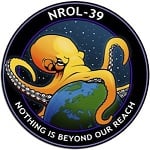It really is crazy how bad the US rail system is. The last time I was taking a trip of about 1000 miles, I looked into taking amtrak. Not only was it more expensive than driving or flying, but it would take significantly longer as well, at 3 days. I know the train themselves are moving faster, and it’s due to stops, but that’s like 15mh average speed. What year is it?!?
It really is crazy how bad the US rail system is.
It’s also crazy to think that at some point in history, it used to be one of the best in the world. And then it got screwed by oil barons.
Actually, the trains aren’t moving faster. I don’t think there’s a single significant span of passenger rail rated for more than 60mph in the US.
Plus commuter trains get delayed frequently to make way for cargo trains.
That’s because Amtrak only owns their own rails in the NEC (North East Corridor) Boston-NYC-Philly-DC. Everywhere else they are riding on privately owned freight railroad tracks, and the Amtrak trains are often shunted for freight to have priority.
Actually the law states that passenger rail has priority.
It’s just unenforced so freight ignores it
As bad as it is, when it does work out, it’s way, way better than flying.
Took a trip to Minneapolis on Amtrak from Columbus, WI (closest station to my house in Madison). Everything is so much more low key than air travel. Seats are fairly comfy, and have legroom that might even beat first class air travel. Food is . . . no worse than airlines.
Most of all, I didn’t feel tired at the end of the trip. Air travel always makes me want to spend the rest of the day in bed.
We’d probably go out of Wisconsin Dells next time. It takes the train an hour to go between the Dells and Columbus, and the extra drive time is less than that. But we also found this wonderful pizzeria not far from the station in Columbus, so idk.
That’s not any better in Europe. This is just a random map of some rail tracks. Trying getting from Porto to Rome by train. On this map it would appear as there should be multiple routes. In reality you’ll be lucky to get it done in 3 days.
It’s funny how you see American movies about the old times and there’s always a train around, but in fact it was the people being around the train.
Actually, every American town founded before 1950 had a train line going through it. Aside from people living on homesteads, and maybe some small antebellum towns, everybody lived in close distance to a train station before they were shut down and torn up.
Worth noting that this map is for passenger rail only. The cargo rail network is much bigger. Basically, this map shows whereever Amtrak runs, where as before the introduction of massively subsidized interstates in the US in 1956, every cargo rail company also ran profitable passenger rail traffic on a massive network that became today’s cargo lines.
The cargo companies dumped their traffic onto the federal government in the 70s and have also ran massive cost cutting programs since, tearing up hundreds of thousands of miles of rail.
https://en.wikipedia.org/wiki/History_of_rail_transportation_in_the_United_States
Another major event in the decline of passenger rail was the elimination of railway post office contracts in 1968 which heavily subsidized passenger transport by also transporting mail
Then the failed merger of the New York Central and the Pennsylvania Railroad(second largest bankruptcy in the country to date, only eclipsed by Enron who simply moved numbers in spreadsheets so do they even count?) created a true crisis as suddenly a significant portion of the eastern US could cease to have rail service
On a related but unrelated note, watching Miles in Transit videos where they take intercity buses, its clear that intercity buses are in danger of ceasing to exist, and he advocates for nationalization. Its hard to imagine such a national bus network as anything but an incredible expansion for Amtrak, greatly improving throughway services and likely improving the quality of bus service. Links here and here(timestamp to the retrospective where he advocates for nationalization)
What the US has that Europe doesn’t is protected former trackbeds - European governments go around salting the earth after closing a railway so when they want to reopen it in 30 years they either can’t or have to spend billions. The US can just reopen it.
Who Framed Roger Rabbit was a documentary. Not the toon town stuff. The part about the judge buying the trolley so he could shut it down to build a highway. We used to have a better rail system than anywhere else. Then the car and oil companies bought the tracks and paved over them in the 1920s to 1950s
A perfect example of this is the Boston T. It’s half the size it was 100 years ago and is still considered the 3rd best transportation network in the country, with a full 50% of all daily commutes to Boston happening on the T.
“Who needs a car in LA? We got the best public transportation system in the world!”
Iberia needs to keep up, damn it!
Spain has the second largest high speed rail network in the world. They’re doing alright.
So, then explain to me how long would it take by train from Bilbao to Vigo.
On that map above we can clearly see a train route. Can I take a train on it?
Can you drive 120km/h in those areas if you don’t take the train?
I don’t take the train here even though I have one because it takes too long. A 3-4 hr car trip takes all day with the train having to makes its stops.
The closest large city is 50 miles (80km) away. I can be there in 45min to an hour depending on traffic. The train takes almost three hours.
Also, there is no public transportation to get to the train stop which is on the bad side of town and there’s no station to wait inside.
You know the difference? I don’t have to actually drive when I take the train. I can do literally anything else, especially if wireless is available.
It’s like people who say, “I don’t need a dishwasher, I can wash them in half the time!”. Yeah, sure, but I don’t have to fucking wash them. Not to mention the environmental and health benefits which, incidentally, works for trains too.






